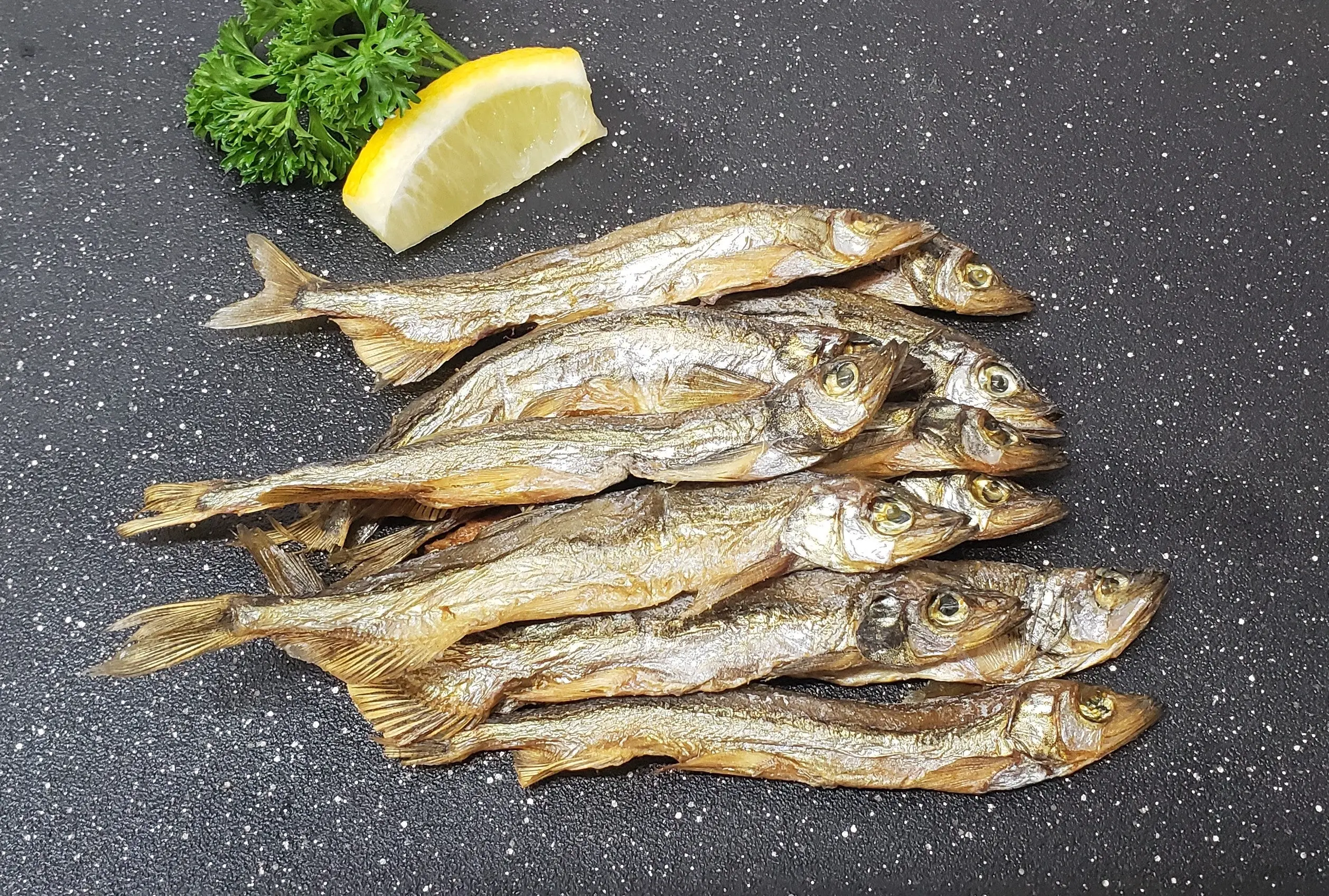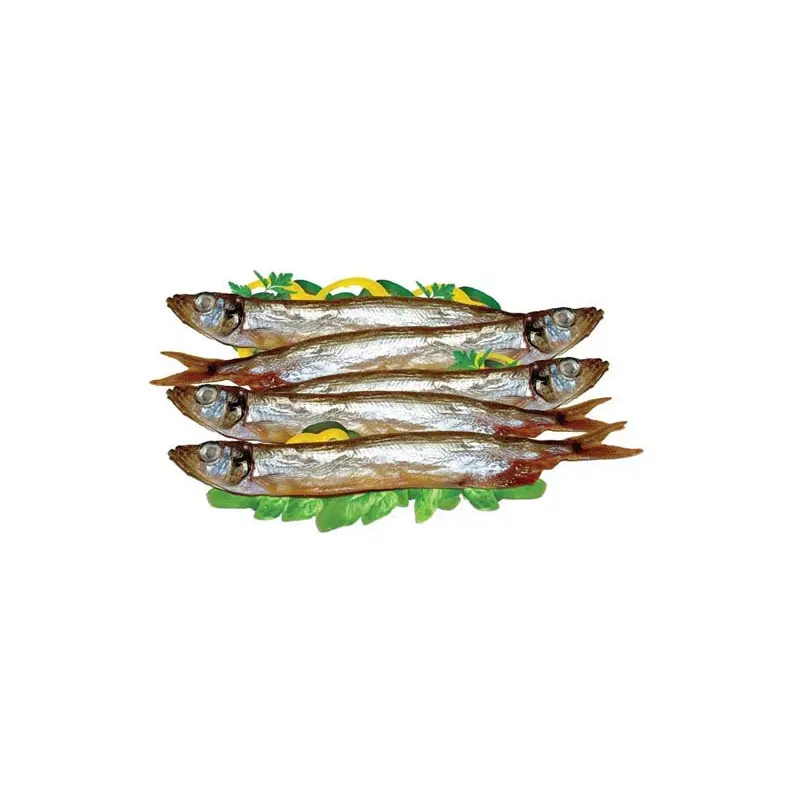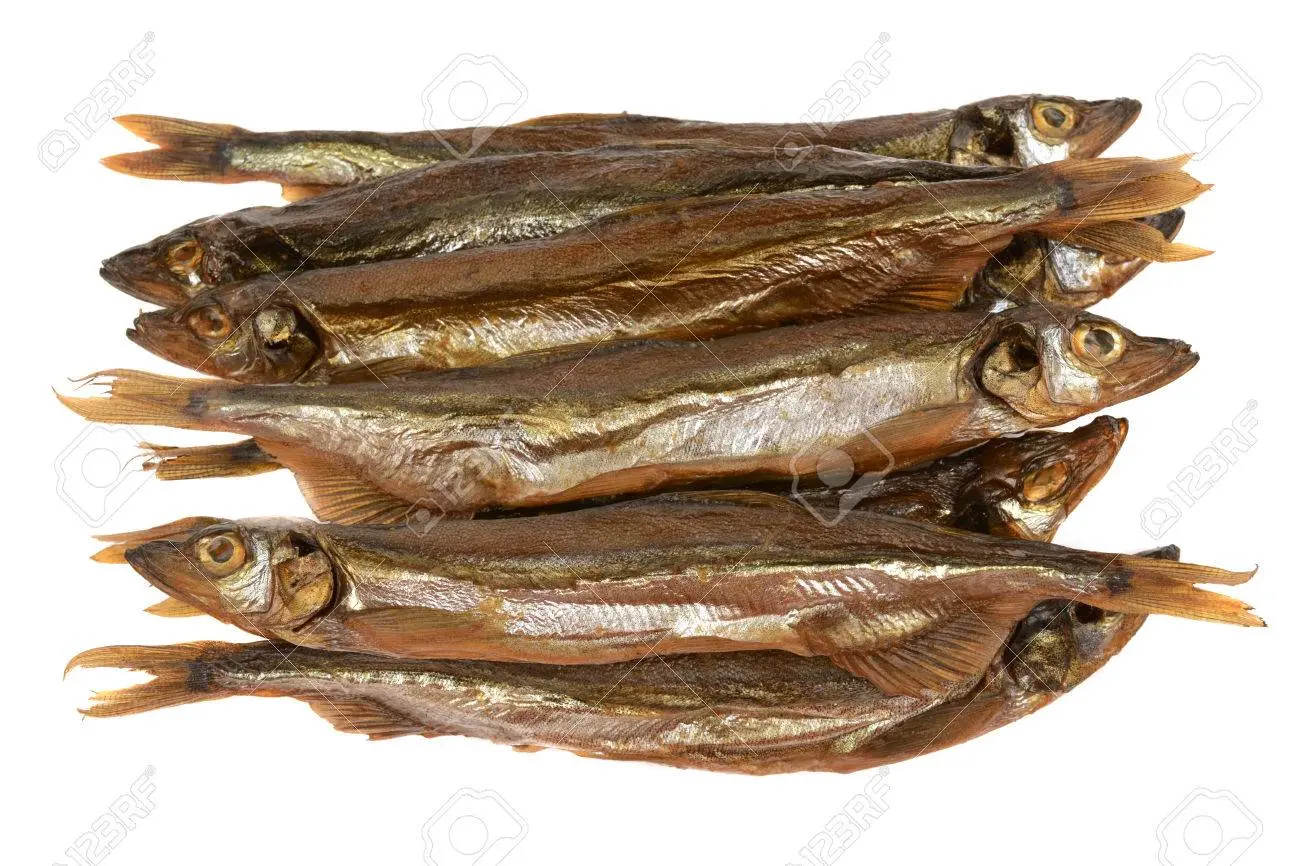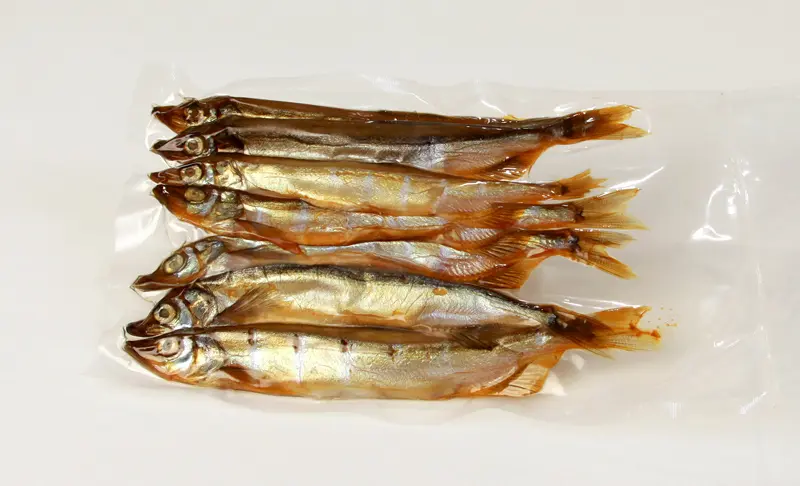Smoked capelin is a popular delicacy that is enjoyed by seafood lovers around the world. This small forage fish, also known as Mallotus villosus, belongs to the smelt family and is found in the North Atlantic, North Pacific, and Arctic oceans. Capelin is known for its distinct taste and is often compared to herring.

What kind of fish is capelin?
The capelin is a species of smelt that inhabits the cold Arctic seas. Unlike many other smelt species, capelin does not enter freshwater to spawn. Instead, it lays its eggs close to the shore, even on wave-washed gravel beaches. Capelin has an olive-green back and a silvery white belly, with small scales and large eyes. It usually reaches lengths of about 20 cm (8 inches).
Capelin is incredibly abundant and serves as a food source for various other fish, seabirds, and mammals in the marine ecosystem.
What does capelin taste like?
Capelin has a unique and delicate flavor that is often described as similar to herring. It has a mild and slightly salty taste, making it a versatile ingredient in various culinary preparations. The flesh of capelin is agreeable and is appreciated by seafood enthusiasts.
When smoked, capelin takes on a smoky and rich flavor that enhances its natural taste. The smoking process adds depth to the fish, making it a delectable treat for seafood lovers.

Capelin migration
Capelin populations in the Barents Sea and around Iceland undergo extensive seasonal migrations. In the Barents Sea, capelin migrates to the coast of northern Norway and the Kola Peninsula for spawning during the winter and early spring. During the summer and autumn, they migrate northward for feeding.

Icelandic capelin, on the other hand, moves inshore in large schools to spawn and migrates in spring and summer to feed in the plankton-rich oceanic area between Iceland, Greenland, and Jan Mayen. The migration patterns of capelin are influenced by ocean currents and water masses.

Reproduction
Capelin reproduces by spawning, with the main spawning season occurring in spring. The majority of capelin spawn when they are three or four years old. Males migrate to shallow waters for spawning, while females remain in deeper water until they are fully mature. Once mature, the females migrate to the spawning grounds to lay their eggs.
Capelin spawning usually takes place at night, and females leave the spawning grounds immediately after spawning. Males, however, remain in the spawning grounds and can potentially spawn more than once during the season. Beach-spawning male capelin are considered semelparous, as they die soon after the spawning season is over.
The spawning habits of capelin can vary depending on the habitat. In beach-spawning populations, females spawn on sand or gravel, while in ocean-spawning populations, both males and females are semelparous and die after spawning.
Diet
Capelin is a planktivorous fish that primarily feeds on zooplankton such as euphausiids, amphipods, and copepods. As capelin grow, their diet shifts towards larger prey, such as larger euphausiids and amphipods. The distribution and abundance of these zooplankton are crucial for capelin to meet their energy requirements throughout their life cycle.
Fisheries
Capelin is an important forage fish and plays a vital role in the marine ecosystem. It serves as a key food source for Atlantic cod and is managed through a multispecies approach in the northeast Atlantic cod and capelin fisheries.
In some years, capelin populations can be heavily affected by the presence of large quantities of Atlantic herring in the Barents Sea. Food competition and predation by herring on capelin larvae can lead to collapses in the capelin stock. However, good recruitment of capelin has been observed despite high herring biomass, suggesting that herring is just one factor influencing capelin dynamics.
In Canada, particularly in the provinces of Quebec and Newfoundland and Labrador, locals engage in the tradition of scooping up capelin in nets or whatever is available when the capelin roll in in the millions each year at the end of May or early June.
Commercially, capelin is used for fish meal and oil industry products, but it is also highly valued as a food source. Capelin roe, known as masago, is considered a high-value product in Japan and is often used as a substitute for tobiko, flying fish roe.
In conclusion
Smoked capelin is a delicious delicacy with a unique and delicate flavor. This small forage fish is highly abundant and plays a crucial role in the marine ecosystem. Whether enjoyed on its own or used as an ingredient in various culinary preparations, smoked capelin is a treat for seafood lovers.
If you want to know other articles similar to Delicious smoked capelin: a delicacy from the sea you can visit the Seafood category.


Related Articles